Content
All issues / Volume 17 (2023) / Issue 7 (July)
Balázs Tatár, László Mészáros
Vol. 17., No.7., Pages 674-674, 2023
DOI: 10.3144/expresspolymlett.2023.49
Vol. 17., No.7., Pages 674-674, 2023
DOI: 10.3144/expresspolymlett.2023.49
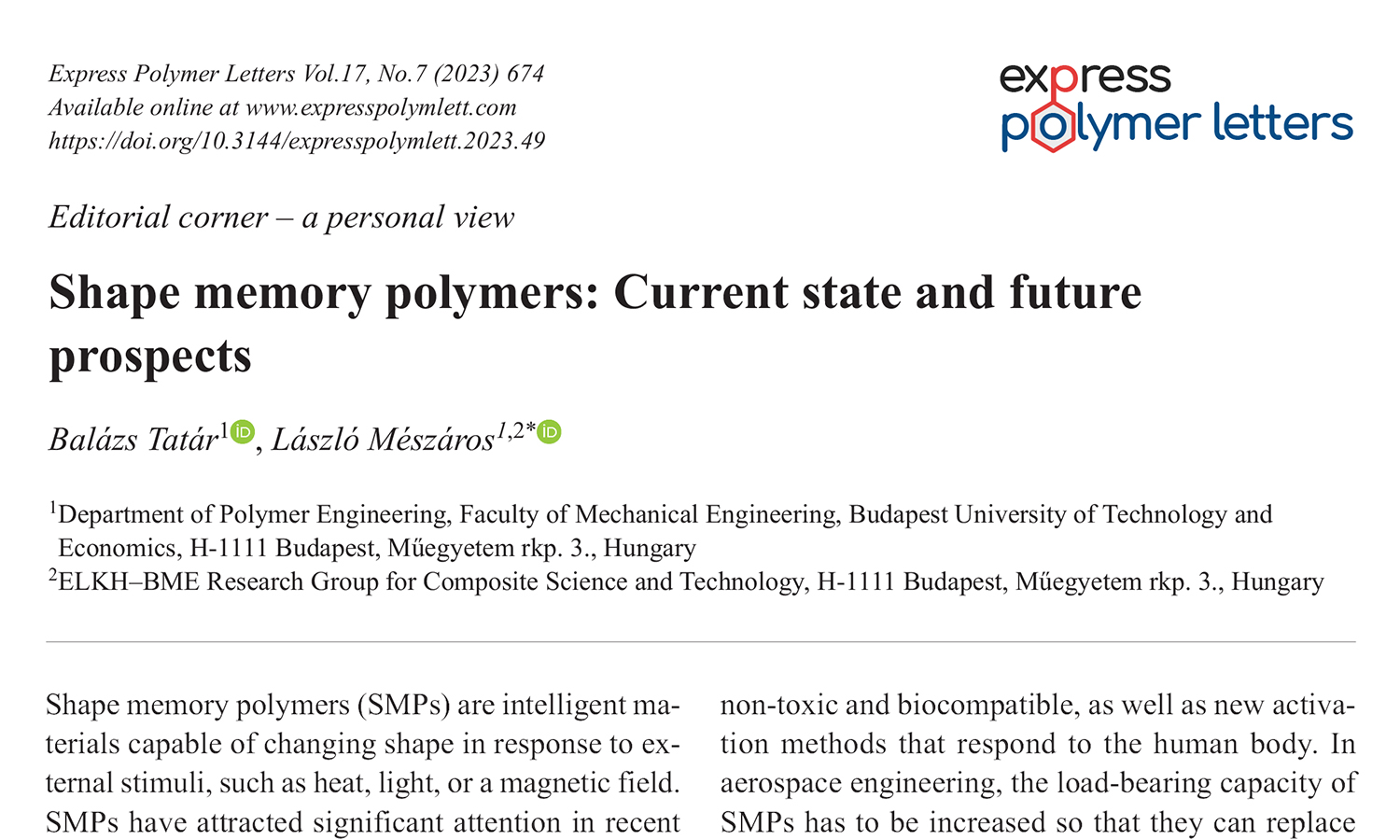
This is an editorial article. It has no abstract.
Azizon Kaesaman, Suwaiyah Lamleah, Charoen Nakason
Vol. 17., No.7., Pages 675-689, 2023
DOI: 10.3144/expresspolymlett.2023.50
Vol. 17., No.7., Pages 675-689, 2023
DOI: 10.3144/expresspolymlett.2023.50
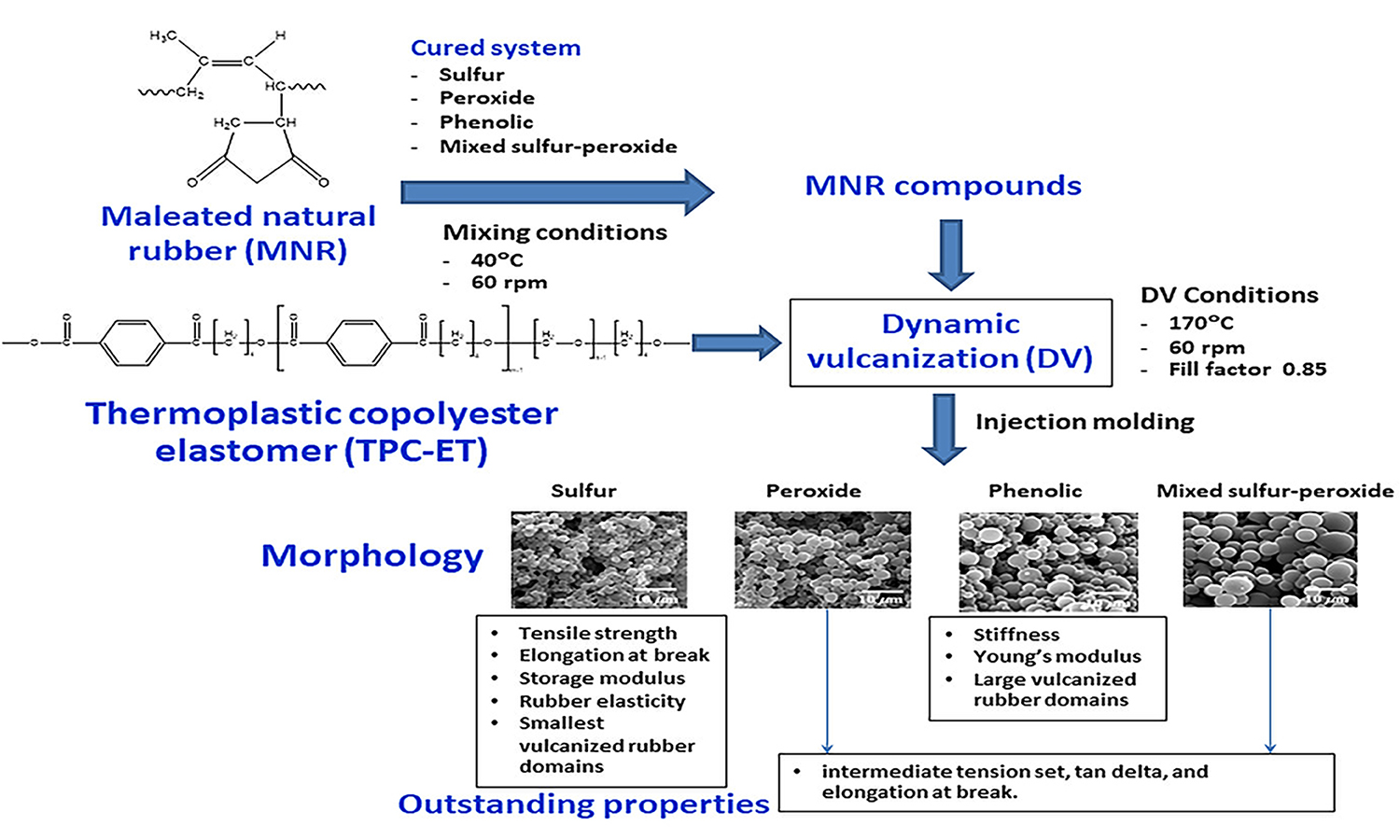
Maleated natural rubber (MNR) was prepared and compounded with four alternative vulcanization systems: sulfur, peroxide, phenolic, and mixed sulfur-peroxide vulcanization systems. It was found that the peroxide and mixed sulfur-peroxide cured systems show a plateau curing curve, while the sulfur-cured system exhibits reversion, and the phenolic cured system gives marching cure behavior. Also, thermoplastic vulcanizates (TPVs) based on dynamically cured MNR and thermoplastic copolyester elastomer (TPC-ET) blends (i.e., MNR/TPC-ET TPVs) by using these vulcanization systems were also prepared and characterized. The height and area underneath the dynamic vulcanization peaks in the mixing torque-time curves directly relate to the degree of vulcanization and strength along with the nature of crosslink structures, and these had the rank order peroxide > mixed sulfur-peroxide > phenolic > sulfur by vulcanization system. This is in good agreement with the maximum torque, tensile strength, hardness, moduli, and toughness of MNR compounds. The locations of the peaks also correspond to the scorch time (ts1), and the sulfur and phenolic cured systems with scorch times of 2.31 and 2.44 min showed peaks at 3.3 and 3.4 min, respectively, offering improved process safety. The sulfur-cured TPV had sulfidic linkages and the smallest-sized vulcanized rubber domains, giving it the highest tensile strength, elongation at break, storage modulus, and rubber elasticity (i.e., the lowest tension set and tan δ). However, the phenolic cured TPV had the highest stiffness, Young’s modulus, and large vulcanized rubber domains, which relate to low content of Chroman ring structures in the crosslinked MNR vulcanizates, with a comparatively low interfacial area and hence weak interfacial interactions between MNR and TPC-ET phases. Furthermore, the mixed sulfur-peroxide and peroxide curing systems gave intermediate tension set, tan δ, and elongation at break.
Arpan Datta Sarma, Erathimmanna Bhoje Gowd, Amit Das, Gert Heinrich
Vol. 17., No.7., Pages 690-698, 2023
DOI: 10.3144/expresspolymlett.2023.51
Vol. 17., No.7., Pages 690-698, 2023
DOI: 10.3144/expresspolymlett.2023.51

This report presents an insightful investigation of the cold crystallization behavior of sulfur-crosslinked polybutadiene elastomers. The influence of crosslink density on the cold crystallization activities of sulfur-crosslinked polybutadiene rubber (BR) is investigated using differential scanning calorimetry, dynamic mechanical analysis, and X-ray techniques. A significant increase in storage modulus (E') is observed at a temperature just above the glass transition temperature (Tg). This behavior was found to be highly dependent on the crosslink density of the rubber. The dynamic mechanical behavior of the sulfur crosslinked BR is supported by further studies using differential scanning calorimetry and low-temperature X-ray diffraction. This study could contribute to a better understanding of the behavior of BR-containing tire tread rubbers at lower temperatures.
Pavel Holec, Radek Jirkovec, Tomáš Kalous, Václava Benešová, Jiří Brožek, Jiří Chvojka
Vol. 17., No.7., Pages 699-703, 2023
DOI: 10.3144/expresspolymlett.2023.52
Vol. 17., No.7., Pages 699-703, 2023
DOI: 10.3144/expresspolymlett.2023.52
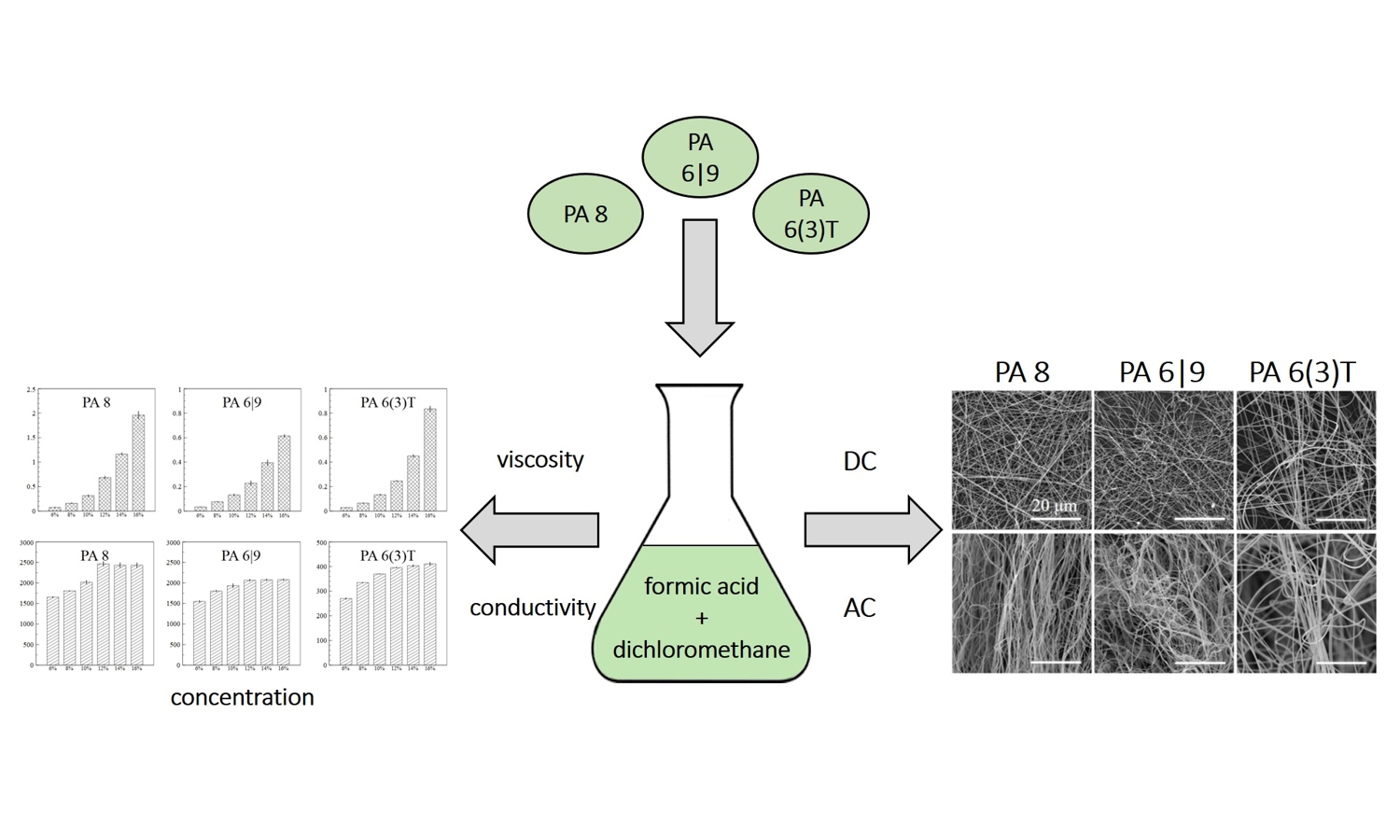
This paper presents a method for direct and alternating current electrospinning of polymeric solutions of three less common polyamides (nylons). Homopolyamide PA 8, heteropolyamide PA 6|9 and semi-aromatic amide (phthalamide) PA 6(3)T were dissolved in the formic acid and dichloromethane mixture, which have proved to be a suitable solvent for various other linear polyamides. The dependence of the viscosity, electrical conductivity, and spinnability via the direct (DC) and alternating current (AC) technology on the solution concentration was observed. Scanning electron microscope images of the prepared nanofibers were acquired and consequently analyzed for fiber defects, followed by measuring the fiber diameters. The differences in the nanofiber quality of DC layers and AC plumes were discussed. Finally, the optimal concentrations for the electrospinning of the examined solutions were determined. The communication follows our previous work and extends the number of electrospinnable polyamides, thus facilitating future research in this area.
Bedriye Nur Yeşil, Tuba Ünügül, Bağdagül Karaağaç
Vol. 17., No.7., Pages 704-721, 2023
DOI: 10.3144/expresspolymlett.2023.53
Vol. 17., No.7., Pages 704-721, 2023
DOI: 10.3144/expresspolymlett.2023.53
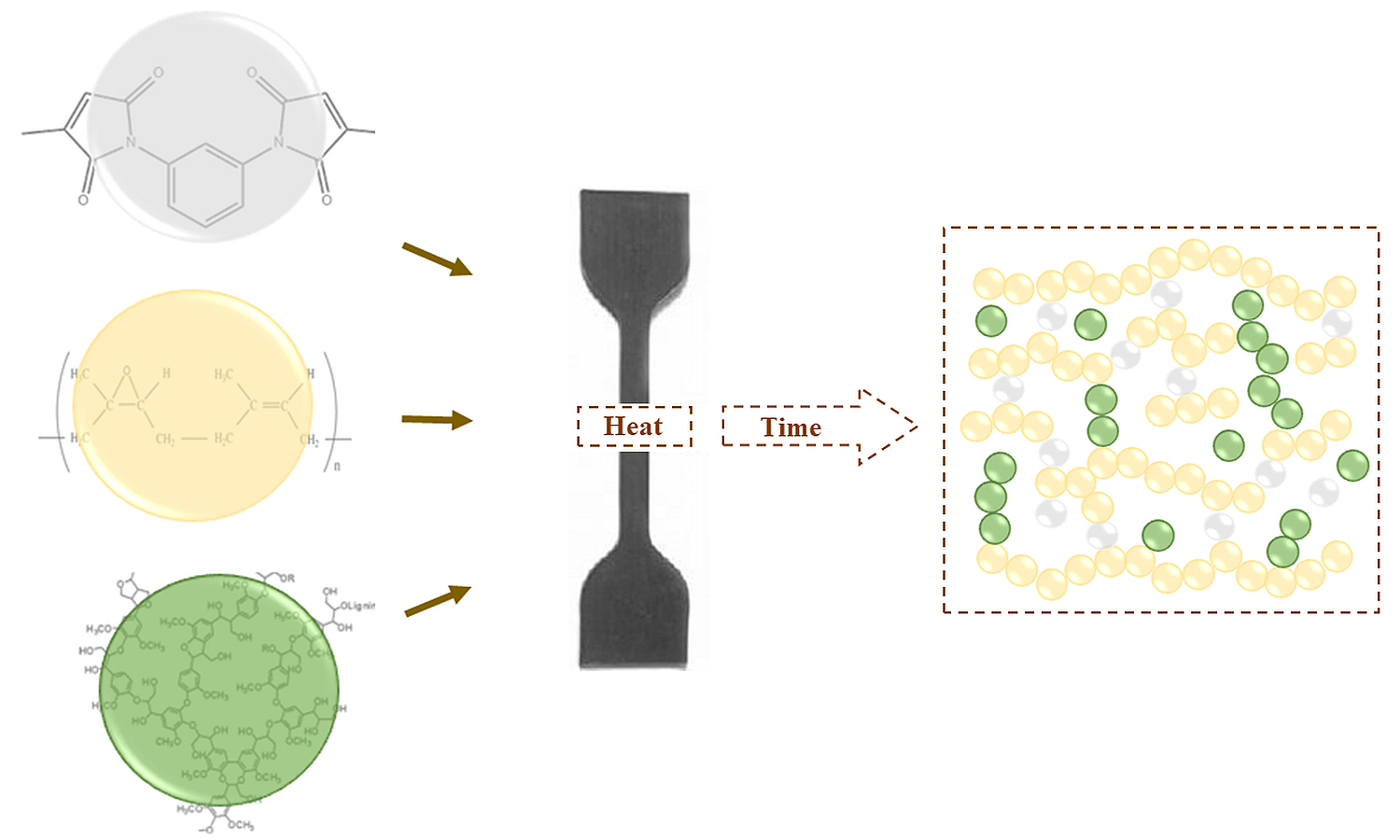
Epoxidized natural rubber (ENR) is a relatively new raw material that can be used in many applications, such as rubber-based adhesives, self-crosslinking, and compatibilization of rubber and filler matrices in favor of reactive epoxy groups. However, as almost all types of polymeric materials do, ENR is exposed to mechanical, chemical, and thermo-oxidative degradation during service life, resulting in micro- and macro-cracks in the material body as well as on the surface. The self-healing approach is considered a good solution to provide longer service life by instantaneous repairing these cracks by means of internal and external stimulants. In literature, most attempts at self-healing of ENR focus on irreversible covalent bond based systems. In this study, lignin and a common anti-reversion agent 1,3-bis(citraconimido-methyl) benzene (CIMB) have been evaluated for carrying out self-healing through reversible covalent bonds via Diels-Alder interaction between ENR and CIMB. In addition, lignin could significantly improve self-healing by promoting an epoxy ring-opening reaction on the ENR backbone. The best healing conditions were selected as 180 °C and 15 minutes, and 83% self-healing was achieved by incorporating 6 phr lignin and 15 phr CIMB into the reference compound. Satisfactory self-healing performance has been attributed to the synergistic effect of lignin and CIMB.
Arshad Rahman Parathodika, Thiyyanthiruthy Kumbalaparambil Sreethu, Purbasha Maji, Markus Susoff, Kinsuk Naskar
Vol. 17., No.7., Pages 722-737, 2023
DOI: 10.3144/expresspolymlett.2023.54
Vol. 17., No.7., Pages 722-737, 2023
DOI: 10.3144/expresspolymlett.2023.54
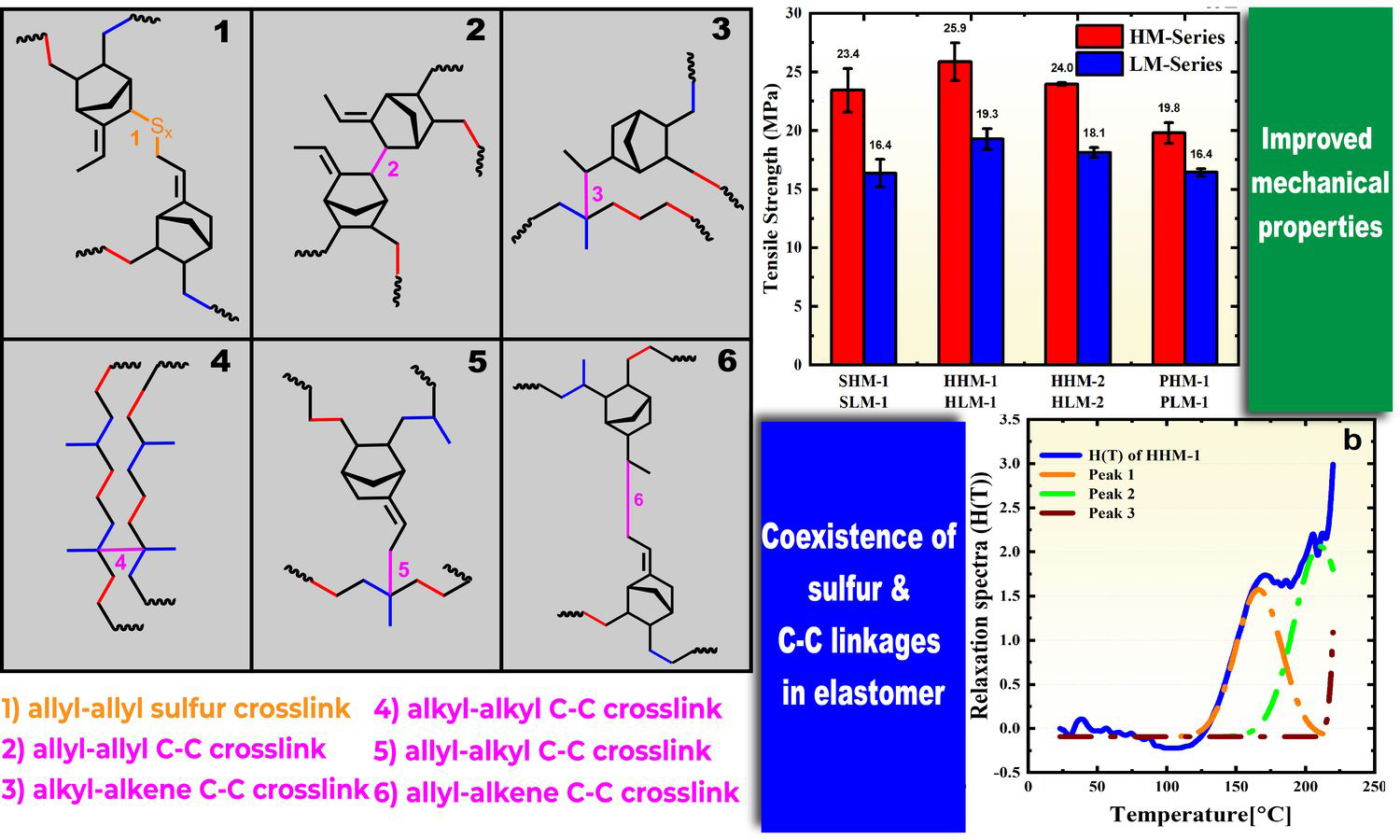
In elastomer science and technology, the advent of vulcanization led to a paradigm change. Despite ongoing research, vulcanization science and technology have a great deal of untapped potential. This article explores how the various vulcanization systems, such as sulfur-based, peroxide-based, and their hybrid systems, would reflect changes in the physiomechanical characteristics of ethylene-propylene-diene monomer (EPDM) rubber with various molecular configurations. This kind of analysis illuminates the characteristics of the crosslinking network established by each vulcanizing technology. Since solid viscoelastic rubbers include a large number of components, it is nearly impossible to evaluate the crosslinking network directly. If all components other than vulcanizing systems remained intact, stress relaxation behavior correlated directly with the crosslinking network inside the samples. In this work, temperature scanning stress relaxation (TSSR), a relatively new technique capable of creating the whole spectrum of stress relaxation, was effectively explored. The findings suggest that sulfur and carbon crosslinks coexist in hybrid systems regardless of the molecular structure of the elastomer, and their synergistic impact is evident. Furthermore, it is clear from the results that the molecular structure of the vulcanizates has an impact on the final properties, such as tensile, compression strength properties and thermal properties of the samples.
Hoorieh Barangizi, Justyna Krajenta, Andrzej Pawlak
Vol. 17., No.7., Pages 738-758, 2023
DOI: 10.3144/expresspolymlett.2023.55
Vol. 17., No.7., Pages 738-758, 2023
DOI: 10.3144/expresspolymlett.2023.55
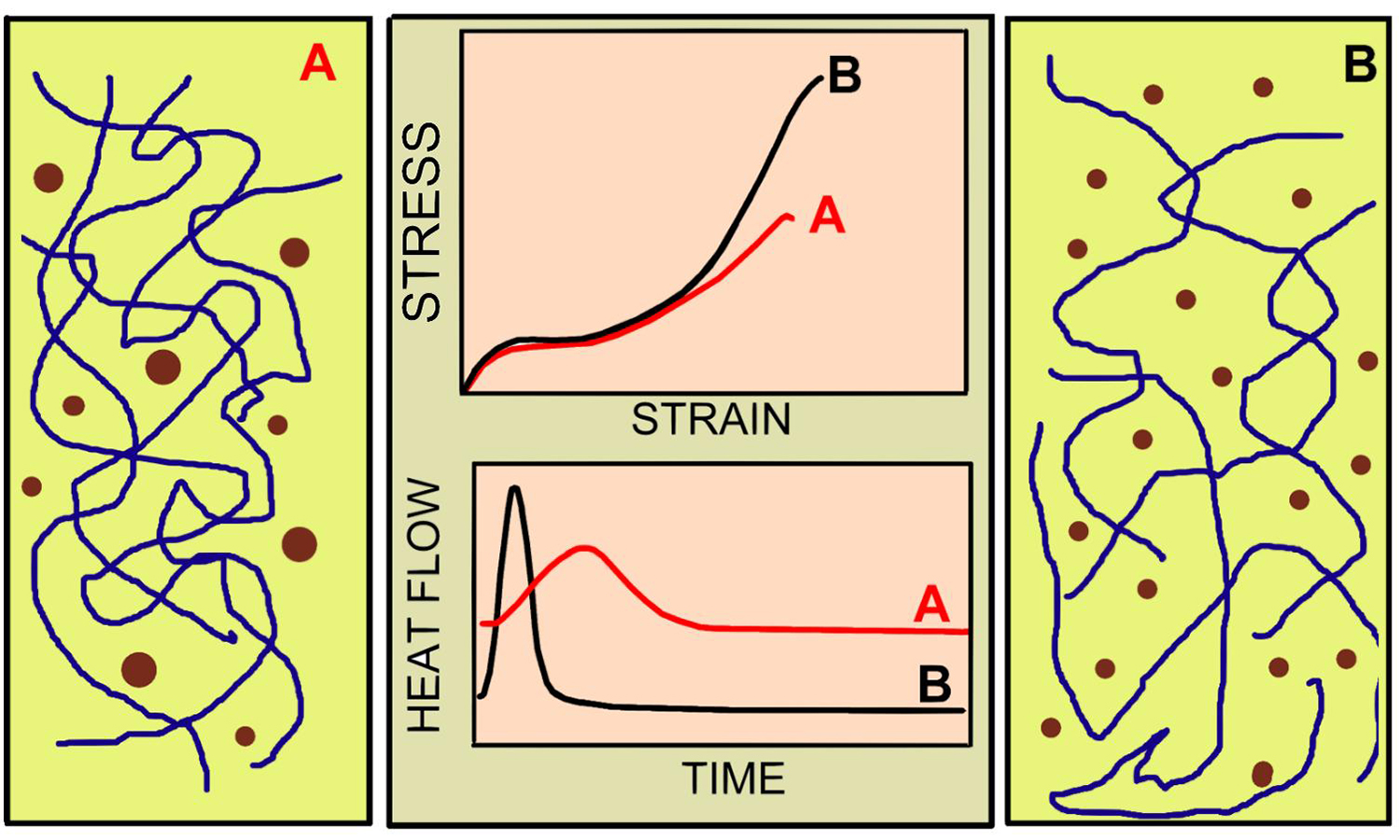
The influence of the reduction of macromolecular entanglements on the thermal and mechanical properties of polylactide composites containing 0.1–1.0 wt% of carbon nanotubes was investigated. Partial disentangling of the macromolecules improved the dispersion of the filler during composite fabrication. Greater mobility of less entangled polylactide macromolecules affected the crystallization of nanocomposites, which occurred already during the cooling of the melt and not only as a cold crystallization. Isothermal crystallization studies showed a beneficial combination of matrix disentanglement and increased nanotube nucleation, leading to much faster crystallization. In the entangled composite, crystallization at 120 °C was completed after 14 min, while in the partially disentangled composite only after 9 min. The reduction of entanglements of macromolecules also affected the mechanical properties. The plastic deformation was more easily initiated, and stresses in the strain-hardening phase increased more slowly during the deformation of disentangled homopolymers. In composites, the strain-hardening effect depended not only on the content of nanotubes but also on their dispersion, which was better in the less entangled polylactide matrix.
Praveen Kumar Sharma, Jae-Young Chung
Vol. 17., No.7., Pages 759-770, 2023
DOI: 10.3144/expresspolymlett.2023.56
Vol. 17., No.7., Pages 759-770, 2023
DOI: 10.3144/expresspolymlett.2023.56
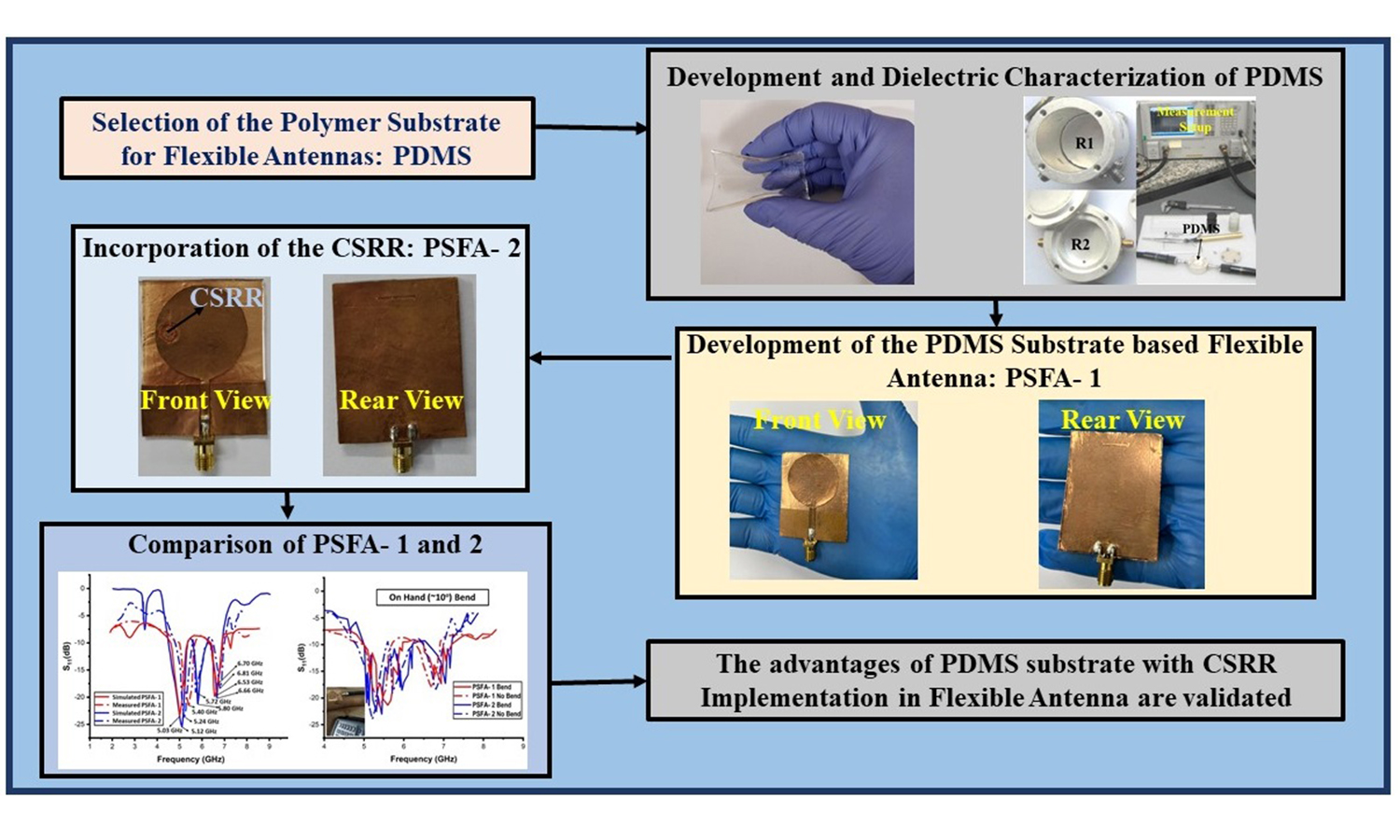
This research illustrates the application of PDMS (polydimethylsiloxane), a silicon-based polymer with loss tangent (tan δεr) and dielectric constant (εr) values of 0.02 and 2.65, as a flexible substrate for antenna (PDMS substrate based flexible antenna – PSFA). In this paper, two flexible antennas having a size of 50.2×40.1×1 mm are presented for wireless body and local area networks. A split ring resonator (CSRR) structure with circular geometry is integrated on the patch in the second proposed antenna as compared to the first antenna with the same dimensions. As a result, this antenna has multiband notched frequency characteristics at 5.12, 5.80, and 6.66 GHz, respectively, with improved performance. It also helped to reduce SAR and backward radiation. Both of the proposed antennas behave well and exhibit significant concordance between simulation and measurement findings when tested in various operational situations, including wet and conformal conditions and demonstrate the suitability of PDMS as a flexible substrate for antenna applications.


